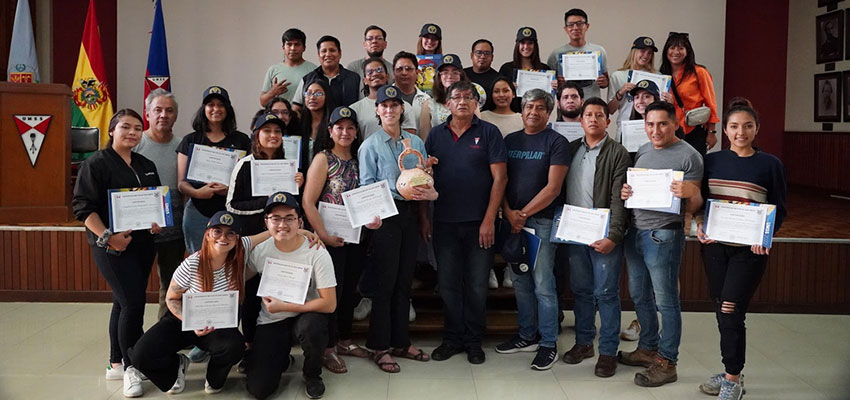
In partnership with the Universidad Mayor de San Simón and the Ecorecolectoras
This is Part 2 of a blog post that discusses a D-Lab student trip to Cochabamba, Bolivia where students from MIT and Universidad de San Simón worked with an organization of 30 waste pickers, who are part of an association of Ecorecolectoras, to design and prototype technologies that allowed for the development of circular economies in Bolivia. You can read Part 1 here, for an introduction to the project, and introduction to the team from two classes, D-Lab: Development and D-Lab: Gender and Development, and an account of field research and community visits that took place during their first days in Cochabamba.
Creative Capacity Building Workshop
The Creative Capacity Building (CCB) Workshop with local University partners, Universidad de San Simón, and the local organization, the Ecorecolectoras, took place over the course of five days.
CCB Day 1: introductions to each other and co-design
On the first day of the CCB workshop, we began the day with a game to get to know everyone. Next, we spent the morning teaching the Ecorecolectoras about the design cycle and the ideas behind co-design. Lastly, before we took a break for lunch, we broke into teams to have a competition. We gathered to build paper structures to support ears of corn off of the floor. We facilitated a “Maize Raise,” a design and build exercise that D-Lab typically uses at the start of CCB workshop. Each team was given only two pieces of paper to support as many corn ears as possible while maintaining a 5 cm height off of the ground with the structure. In the end, after only 15 minutes to build, the winning team was able to support 15 ears of corn with just two pieces of paper. It was a great bonding experience and a taste of what was to come.
Maize Raise!
In the afternoon, we began with our first Build-It. The facilitators from longtime D-Lab community partner Diversa in Columbia had led the group in constructing a corn sheller. We worked in four stations – first to draw the lines on the sheet metal to mark the size and location of the divots, next to cut and file the metal, third to hammer the divots into the sheet metal, and lastly to close the device and seal it. This experience gave the waste-pickers the confidence to work with a variety of tools for metal.
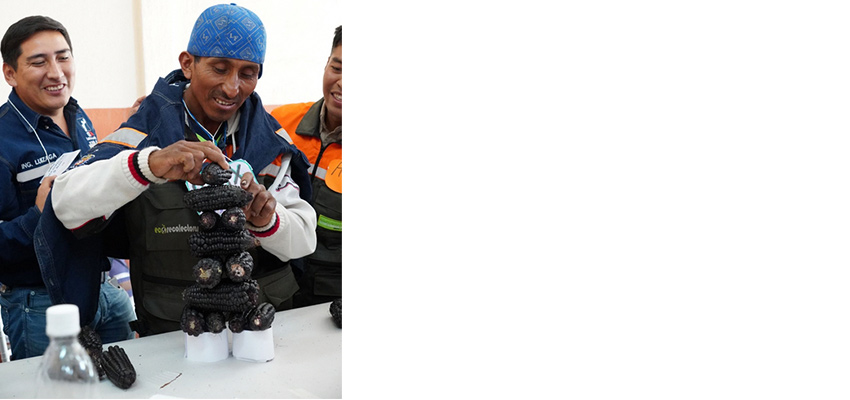
CCB Day 2: design cycle, value and supply chain mapping
On the second day of the CCB workshop, we began with a game to see how much people had learned the day before. We then continued to learn about the design cycle and the success of D-Lab and Diversa’s collaboration in other areas of the world. Carola Ortuno gave a presentation on adding value throughout the supply chain. Alyssa and Marina, two of the students from the D-Lab: Gender and Development class, gave a quick but thorough presentation on the opportunities for profit with organic waste in Cochabamba. Next, we split into six teams with two teams addressing one of three supply chain points or issues: the Orange Points (the drop-off points for waste), the door-to-door routes of the Ecorecolectoras, and direct calls from businesses to waste collectors. We wrote out a very detailed depiction of their current supply chain and then did the same for the supply chain they hope to have in the future. We then created paths between the two supply chains to connect the current chain to the future one through value-adding initiatives. Each team presented its ideas and supply chains to the entire group.
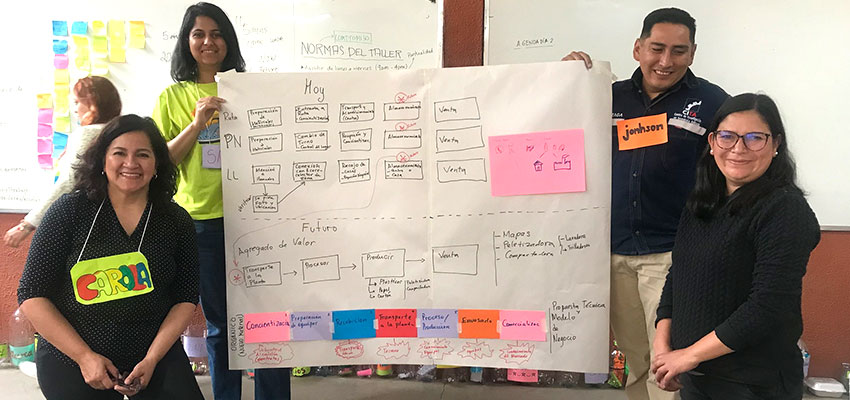
We toured the machines that the University currently has such as a plastic shredder in order to give the Ecorecolectoras ideas for options and to see the facilities of the University.
We divided into teams and began to brainstorm different ideas. The seven teams included – Compactor, Pelletizer/Shredder, Compost, Biole, Website Building, Business Model for Organic Waste, and Oven for Melting Aluminum. We first had everyone on each team draw three different ideas for the prototype. We spent the end of the morning and the rest of the afternoon sharing the ideas and giving everyone on the team a chance to present and ask questions. The teams were extremely passionate and I could feel the excitement around the room as we began to work together to develop a prototype.
CCB Day 3: sketch modeling and headlamp "build-it"
We began the day with everyone on the team selecting one of the ideas from the day before and constructing a miniature prototype with cardboard, paper, and other arts-and-crafts materials. After this construction, we use a matrix of different priorities to vote, and ultimately decide, which design each team wanted to select. Then, we developed a list of materials together and gave them to the administration to purchase.
In the afternoon, we completed our second and last Build-It – headlamps! The teams worked diligently to cut, lathe, and glue the pieces together. We were running low on time so this was completed rather quickly.
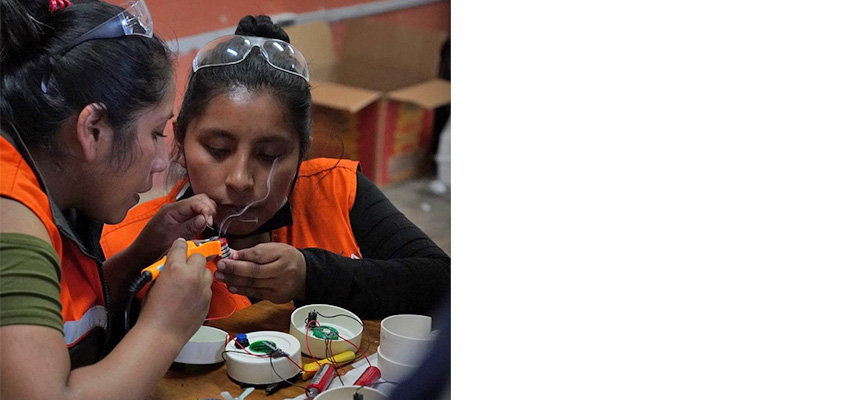
CCB Day 4: construction day
The fourth day of the CCB workshop was a construction day. The Ecorecolectoras arrived late because of a blockade in the southern region of the city, but as soon as they arrived we got to work quickly. Each team worked diligently and made great progress on this day!

CCB Day 5: finalizing prototypes
The fifth day of the CCB was also largely a construction day, as well. We worked until 3 PM on finalizing the prototype and preparing for the presentation. At 3 PM, the entire group gathered to present their ideas and ask questions. We began with the aluminum oven, followed by the compost and worm storage system, and next the biole tank, the compactor, the shredder, the website prototype, and lastly, the business model.
To end the day, we said our goodbyes and thank-yous and gathered to take pictures. The Ecorecoletoras gave us amazing handmade gifts and hugged each of us.
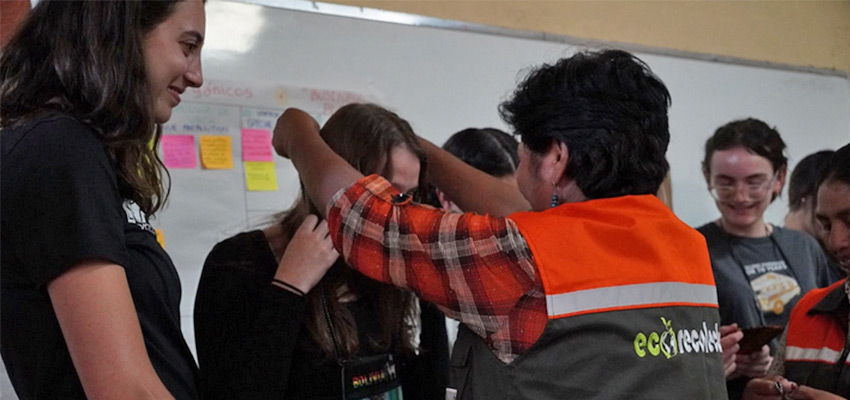
Trip highlights
For me, the greatest highlight of the trip was the relationships that I formed with the Ecorecolectoras and the Universidad Mayor de San Simon partners. To overcome the language barrier, we conversed using the voice-to-text feature on Google Translate and asked fellow students for translations. The Ecorecolectoras were incredibly kind, welcoming, creative, and extremely hardworking. I watched as the Ecorecolectoras grew in confidence, both with the machines and proposing their ideas. At the end of the week, they were wielding power tools with ease. Additionally, the Ecorecolectoras made an effort to get to know me personally, never hesitating to ask me questions about my life and saving me a seat at lunch. I will never forget just how positive and cheerful these women were. From the first day of the CCB workshop to the end, they were full of stories and poured tons of energy and enthusiasm into every step of the process. At the end of the week, this made for very difficult goodbyes between our team members and the Ecorecolectoras. You can find a picture of below me with one of the Ecorecolectoras from my team, her sister, and her baby, who had perfect attendance at the CCB workshop!
The other major trip highlight was meeting and forming close relationships with the students and coordinators from Universidad Mayor de San Simon. All of the students were extremely passionate and hardworking volunteers. They went out of their way to welcome us to the city of Cochabamba and share their stories with us. Together with the students, we ate some foods that were very adventurous for us, including cow hearts, crocodile chicharron, and llama quesadillas!
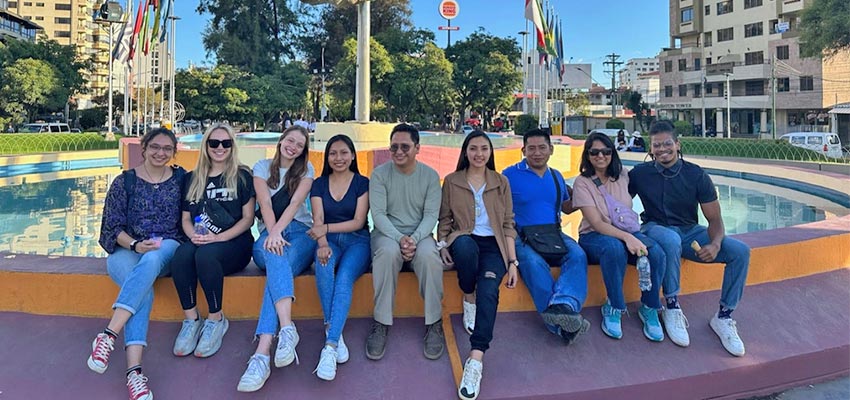
Another specific trip highlight was our visit to the Cristo de la Concordia (Christ of Peace) statue atop San Pedro Hill. The mayor sent a tour guide to take us up to the iconic statue during sunset. The tour guide told us that the Cristo is even taller than the Christ the Redeemer in Rio de Janeiro, Brazil, and is the second-largest statue of Jesus Christ in the world. The Cristo was surrounded by numerous viewing platforms that offered stunning panoramic views of the sprawling city of Cochabamba, which is the 4th largest city in Bolivia.
We will always remember our trip to Cochabamba and are so grateful to the Ecorecolectoras and our partners at Universidad Mayor de San Simón.

Please see the second blog post in this series: Creative Capacity Building for Circular Economy Design in Cochabamba, Bolivia - Part 1
More information
Class: D-Lab: Development
Class project page: Limpiando Cochabamba con las Eco-Colectoras: CCB Workshop & Cooking Oil to Soap Initiative
Class: D-Lab: Gender and Development
Class project page: Livelihood Alternatives with Waste Pickers in Cochabamba
Contact
Libby McDonald, MIT D-Lab Lecturer, Inclusive Economies Lead, Co-Instructor, D-Lab: Gender and Development
Libby Hsu, MIT D-Lab Lecturer, Associate Director of Academics, and Instructor, D-Lab: Development

